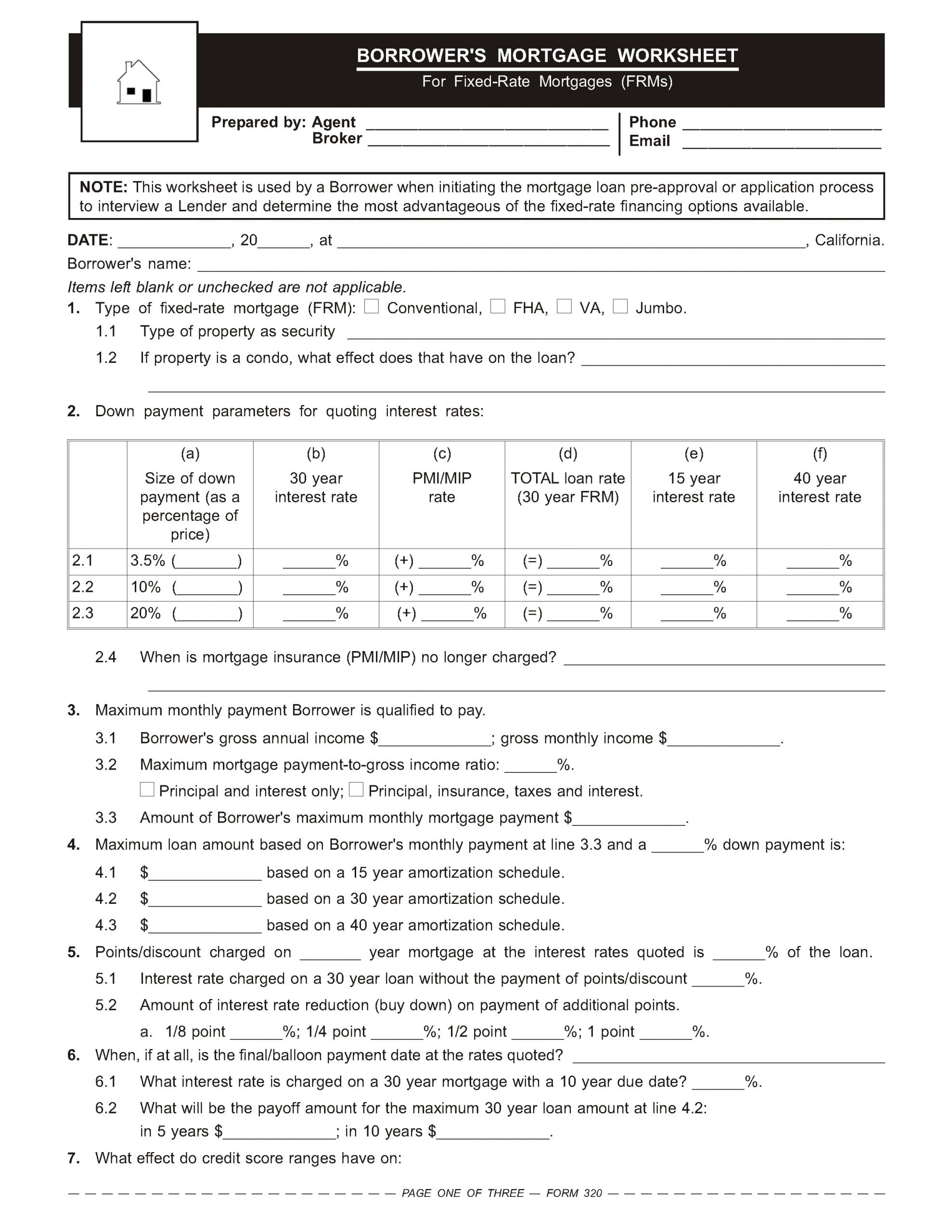Walking the buyer through mortgage financing
The ability of a buyer or an owner to obtain financing is an integral component of most real estate transactions.
The buyer’s agent, referred to by lenders as the transaction agent (TA) in the context of financing, owes their buyer the duty to ensure they negotiate the best financial advantage available among multiple mortgage lenders.
The duties imposed by agency law on the TA include:
- helping the buyer locate the most advantageous mortgage terms;
- oversight of the mortgage application submission; and
- policing the lender’s mortgage packing process and funding conditions.
Recall that a lender’s objectives and goals are diametrically opposed to those of the buyer. The lender is selling a product to potential buyers. Consequently, homebuyers have the liberty to accept — or reject — a lender’s offer.
The buyer’s agent owes a fiduciary duty to their buyer to help them acquire the information needed to make an educated choice regarding their finances. Without mortgage information, a homebuyer cannot make a well-informed decision as to which mortgage offers the most advantageous terms.
Thus, the buyer’s agent is obligated to shepherd their homebuyers through the asymmetry of information created by the buyer’s inexperience and the lender’s silence about the mortgage process and available mortgage options. Agents, well-versed in real estate fundamentals and lender conduct, are the only ones available to walk their homebuyers through the mortgage market.
Shop ‘til you drop
The consequences of not competitively shopping for mortgages amounts to a costly mistake for prospective buyers.
As much as 30% of buyers do not comparison shop for their mortgage, and more than 75% of borrowers applied for a mortgage with only one lender, according to the Consumer Finance Protection Bureau (CFPB).
This failure to shop around costs the average homebuyer about $300 per year and tens of thousands of dollars over the life of the mortgage. In high-cost California, the average cost for not shopping around is even higher.
As a matter of best practices, mortgage applications ought to be submitted to at least two lenders. Without a backup application processed by another lender, the buyer is left with no opportunity to reject the lender’s eleventh hour changes. [See RPI e-book Real Estate Principles, Chapter 54]
Multiple government agencies also promote the practice of submitting more than one application. To assist the buyer with the task of comparing the products of two or more lenders, government entities publish Mortgage Shopping Worksheets.
The Mortgage Shopping Worksheet published by Realty Publications, Inc. (RPI) is designed to be completed by the buyer with the assistance of the TA. The worksheet contains a list of all the mortgage variables commonly occurring on origination and during the life of the mortgage. [See RPI Form 312]
Keep in mind that submitting applications to multiple lenders will not adversely affect the buyer’s credit score, so long as the buyer conducts all of their mortgage inquiries for comparisons within a 45-day period.
Related Video: Preparing for Meeting with a Lender
Click here for more information on meeting with a lender.
Interest rate variations
A promissory note is a document given as evidence of a debt owed by one person to another. It is given in exchange for property as a promise to pay. The signed promissory note is not the debt itself, but evidence the debt exists.
Promissory notes are partly distinguished based on interest rate calculations, such as:
- fixed interest rate notes, commonly called fixed rate mortgages (FRMs); and
- variable interest rate notes, commonly called adjustable rate mortgages (ARMs).
The most common type of home financing in the U.S. is the 30-year FRM. Under this arrangement, the interest rate and scheduled payments remain fixed for the life of the mortgage, giving certainty to future payment obligations. [See current market rates]
The ARM, as opposed to an FRM, calls for periodic adjustments to the interest rate after an initial teaser period. Thus, the amount of scheduled payments fluctuates from time to time and may rise significantly. The ARM provides the lender with periodic increases in its yield on the principal balance during periods of rising and high short-term interest rates. [See RPI e-book Real Estate Finance, Chapter 6]
Whether the buyer chooses an FRM or an ARM, they always have the option to shop around for the most advantageous financing options available to them.
A buyer who is shopping for a FRM, with help from the TA, uses the Borrower’s Mortgage Worksheet — For FRMs to determine their best FRM term. [See RPI Form 320]
Likewise, a buyer who is shopping for an ARM, along with their agent, uses the ARM Disclosure Worksheet to determine their best ARM term available across mortgage lenders. [See RPI Form 320-1]
Related Client Q&A:
Mortgage shopping worksheet
A TA and their buyer uses the Mortgage Shopping Worksheet published by RPI when a mortgage application is submitted to two or more lenders. The form allows the buyer to compare mortgage rates and origination costs offered by different lenders competing to make the same type of mortgage. [See RPI Form 312]
The Mortgage Shopping Worksheet contains the critical details of three different mortgages in friendly columnar format, including:
- the total mortgage amount to be funded;
- the size of the down payment the homebuyer intends to put down;
- the mortgage term in years;
- the estimated total monthly payment the homebuyer will be paying to the lender;
- the monthly cost of private mortgage insurance (PMI) or mortgage insurance premiums (MIPs), when required;
- whether the mortgage has a fixed or adjustable rate of interest, and the associated rate and terms;
- the lender’s margin on the mortgage;
- the total expected lender and origination fees;
- whether the mortgage contains a final/balloon payment, and if so, the amount and when it becomes due; and
- the amount of any prepayment penalty the homebuyer will pay when they pay off the mortgage early. [See RPI Form 312]
The worksheet is used to compare the terms of either a purchase-assist mortgage or mortgage refinance. Space is provided for the entry of mortgage terms offered by three competing lenders, and the terms of an existing mortgage when an owner is refinancing.
Once complete, the homebuyer and their agent can quickly compare the terms offered by the competing lenders.
Related article:
The Mortgage Shopping Worksheet — assist your homebuyer to close with the most competitive lender
Borrower’s mortgage worksheet for FRMs
A buyer, owner or their TA uses the Borrower’s Mortgage Worksheet for FRMs published by RPI when initiating the mortgage loan pre-approval or application process. The form allows the borrower to interview a lender and determine the most advantageous of the fixed-rate financing options available. [See RPI Form 320]
The Borrower’s Mortgage Worksheet for FRMs includes all the information and terms on a fixed-rate mortgage, including:
- the type of FRM (Conventional, FHA, VA, Jumbo) [See RPI Form 320 §1];
- the type of property [See RPI Form 320 §1.1];
- down payment parameters [See RPI Form 320 §2];
- the borrower’s maximum monthly payment abilities [See RPI Form 320 §3];
- the maximum loan amount for each amortization term (15-year, 30-year or 40-year) [See RPI Form 320 §4];
- points and discounts available [See RPI Form 320 §5];
- the final/balloon payment terms [See RPI Form 320 §6];
- the effect of credit scores on different aspects of the mortgage [See RPI Form 320 §7];
- the effect of a co-signer on the mortgage [See RPI Form 320 §8];
- whether the mortgage has a prepayment penalty provision or not, for which period it applies and how much the penalty is [See RPI Form 320 §9];
- the loan assumability terms by the buyer on resale of the property [See RPI Form 320 §10];
- the lender’s pre-approval letter information and when the borrower will receive it [See RPI Form 320 §11];
- charges to be disclosed in a Good Faith Estimate (GFE) [See RPI Form 204-5; See RPI Form 320 §13];
- seller contribution restrictions [See RPI Form 320 §14];
- loan documents to be signed at the time of closing [See RPI Form 320 §15];
- web addresses where loan information is obtained [See RPI Form 320 §16];
- unemployment insurance information [See RPI Form 320 §17]; and
- lender recommendations. [See RPI Form 320 §18]
Once complete, the buyer or owner and their agent have all the information needed to determine whether the borrower wants to close on the mortgage on the terms offered.
Related article:
ARM disclosure worksheet
A buyer, owner or their TA uses the ARM Disclosure Worksheet published by RPI when locating the most advantageous ARM financing available for funding the purchase or refinance of a property. The form allows the agent to provide the buyer or owner with a checklist for conducting an interview with mortgage lenders and noting for comparison the terms they offer on an ARM. [See RPI Form 320-1]
The contents of the ARM Disclosure Worksheet includes:
- the name of the loan plan, lender, loan officer and the property’s address [See RPI Form 320-1];
- the monthly interest rate adjustment, when the first adjustment occurs and the note ceiling rate, as well as the initial interest rate and how long it is in effect [See RPI Form 320-1 §§1 through 4];
- whether full amortization, interest only payments or buildup of the principal amount borrowed is a feature of the loan, and the terms [See RPI Form 320-1 §§5 through 7];
- whether a due-on-sale clause exists in the trust deed, and the conditions for consent to an assumption on a resale [See RPI Form 320-1 §8];
- whether a prepayment penalty exists and, when applicable, for what period it applies and the terms [See RPI Form 320-1 §9]; and
- whether the mortgage provides for convertibility to a fixed rate loan at the borrower’s election, and under what conditions. [See RPI Form 320-1 §10]
Once complete, the buyer or owner with their TA is able to determine whether they want to proceed with obtaining the mortgage on the terms offered or seek financing elsewhere.
Related article:
Want to learn more about walking a buyer through mortgage financing? Click an image below to download the RPI books cited in this article.























